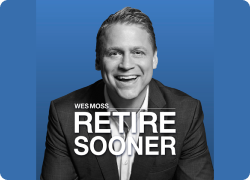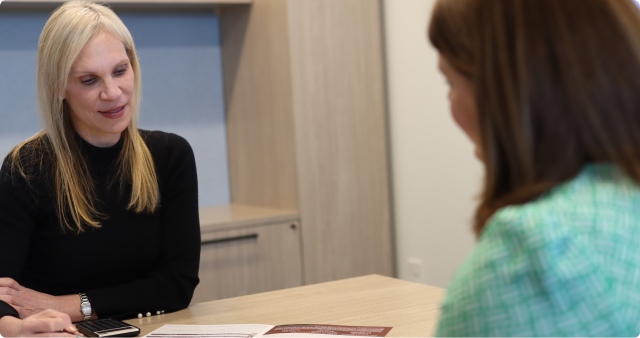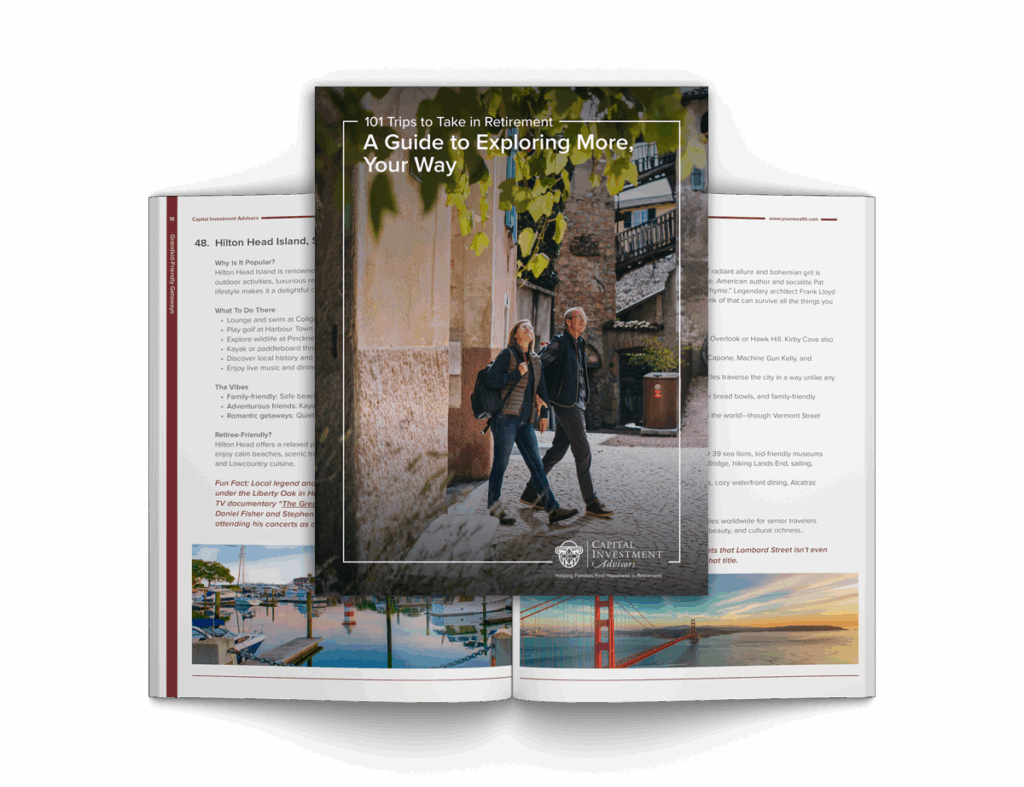Navigate the shifting landscape of today’s economy in this episode of the Money Matters Podcast with Wes Moss and Jeff Lloyd. Get clear, timely conversations on the trends, policies, and market forces shaping your wallet, your investments, and your financial decisions—without the noise or jargon.
-
Examine how signs of a cooling job market could influence interest rates and financial planning considerations.
-
Review the ongoing reliability of Bureau of Labor Statistics (BLS) job reports, noting that while methodologies can evolve, the agency remains a trusted source for employment data.
-
Explore the rapid expansion of gig and part-time work and how it challenges long-standing measures of labor market health.
-
Track how labor market changes ripple through inflation, wage trends, and the Federal Reserve’s approach to interest rates.
-
Unpack the implications of new global tariffs, including exemptions benefiting U.S.-based manufacturing, and why companies like Apple may be committing major investments domestically.
-
Discuss how a more balanced labor market could ease wage inflation pressures and influence future Fed decisions on rate adjustments.
-
Analyze the growing role of artificial intelligence and automation in reshaping entry-level job opportunities and long-term career paths.
-
Review recent shifts in mortgage rates, including recent declines, and how they may impact affordability for buyers and homeowners.
-
Compare unemployment rates between the broader workforce and recent college graduates entering the job market.
-
Highlight how college tuition growth continues to outpace general inflation, reinforcing the importance of planning ahead for education expenses.
-
Identify key financial milestones—such as paying off a mortgage or funding a child’s education—that may signal greater financial readiness for retirement.
-
Reaffirm the value of multi-asset class income investing and how diversified, steadily growing income streams can possibly help maintain purchasing power over time.
Press play and get the context you need to approach your financial journey with clarity. Listen and subscribe to the Money Matters Podcast today so you never miss a conversation that matters. 🎧
Read The Full Transcript From This Episode
(click below to expand and read the full interview)
- Wes Moss [00:00:02]:
The Q ratio, average convergence divergence basis points and BS Financial shows. Love to sound smart, but on Money Matters, we want to make you smart. That’s why the goal is to keep you informed and empowered. Our focus, providing clear, actionable information without the financial jargon to help 1 million families retire sooner and happier, bigger. Based on the long running WSB radio show, this Money Matters podcast is tailor made for both modern retirees and those still in the planning stages. Join us in this exciting new chapter and let’s journey toward a financially secure and joyful retirement together. Wes Moss along with co host Jeff Lloyd. The topic here for this hour is the economy slowing, jobs are cooling, the labor market cooling.Wes Moss [00:00:57]:
And what does that mean for the Federal Reserve interest rates and your wallet? The reality here is that, and I was doing the math on this, we averaged in 2025, we’re talking labor market jobs. If you look at the first three months of the year, it was very robust. I mean, we had 170, we averaged around 175, almost 175,000 new jobs per month. And the numbers in April, May, June, or let’s call it May, June, July, those numbers looked supposedly pretty good, but then they were revised. They were revised lower. And then that was the big kerfuffle. The head of the BLS is out. Obviously there was this back and forth between the White House.Wes Moss [00:01:49]:
There was great controversy around did the president fire her too quickly? Was it too abrupt? And I get that. And there’s the worry about the sanctity of data. And are we just going to put somebody in the head of these statistical organizations? And when the world relies on this data, this is the United States data is supposed to be the gold standard of accuracy and transparency. And we know the numbers. And there’s this past week, lots of worry. Well, are we just going to, is the White House just going to put somebody that gives them good numbers? And I really don’t think that’s going to happen. Happen. I think what happened here is that we’ve talked about this too.Wes Moss [00:02:28]:
Our one of our great economic friends who’s one of the, I think one of the best economists in the United States, Don Rismiller, for the last couple of years has been talking about how difficult the data coming from the BLS has gotten. It’s hard for them to collect. The response rates are low. And we brought it up here on the show six months ago about how there’s no way the jobs numbers seem accurate when it comes to those who are holding multiple jobs. And part Time jobs. Remember, I don’t know if you were here on the show with me, but we talked about this three or four months ago where the economic data shows that there’s less people working gig work and part time jobs than there were in the year 2010 or the year 2000, which seems impossible to me. And this is why Rhys Miller brought this up. He said, how is that possible when you can have that DoorDash wasn’t around 15 years ago.Wes Moss [00:03:23]:
Sure we had pizza delivery, but now we have pizza delivery, we have doordash, we have Uber eats, we have Uber. These are all part time jobs. They’re very easy to attain and lots of people do them instacart. I mean think about the delivery world, the on demand world we live in and there are less part time second gig jobs happening. It just didn’t make sense. So that’s, I think this is a classic economy changing faster than an institutional system. And the BLS has they survey hundreds of thousands of businesses. I think it’s something like 121,000 businesses, 600 million or 660 million employees.Wes Moss [00:04:03]:
It’s just an incredible number. And I think the labor market has changed so dramatically since the pandemic. And you’ve got people that are work from home. We have people that are now more gig, worker oriented and they haven’t been able to keep up keeping tabs on the jobs. And that to me is something that’s gotta evolve and change. And I think that’s what’s gonna happen. I don’t think we’re gonna put somebody, the White House is gonna put somebody in there just to make up job numbers. I mean this is not China, this is the United States.Wes Moss [00:04:33]:
But I do think as opposed to saying, oh gosh, the response rates are low, we just, you know, only about 65% of people are getting back to us now. That’s not good enough. It needs to go back to where it was. And I think the system will now get improved. And if the government agencies don’t do it, what’ll happen?Jeff Lloyd [00:04:52]:
We’ll fact check them here on money matters, because that’s what we do. Right?Wes Moss [00:04:55]:
That’s true because you’ll get a private company that does it. We already get numbers, private payrolls from adp. You’ll get a research company that figures out how to do it. You’ll get a new AI startup that says, oh, we’ve got, we can get 95% accuracy on this. So someone else will come up with a solution for, to accurately measure the job market. If the government doesn’t do it. Now, these numbers, though, really matter. This is what moves the market.Wes Moss [00:05:22]:
You can ask any economist. If there’s only one data point you could get, what would it be? You’re going to have a bunch of them say jobs. All I need to know. There’s so many other economic data points, and I love looking at all of them. You got to get to know what’s happened in the labor market.Jeff Lloyd [00:05:39]:
Yeah, at the end of the day, the market is driven by the US Job market and the bls. They put out a lot of numbers, but that’s the most important. We’ll get another number out of the BLS next week when they announce Consumer Price Index, or cpi. We’ll get a measure of inflation this Tuesday. But I think the backbone of the US Economy, it’s what we like to talk about. It’s the army of American productivity, and that is the U.S. workforce.Wes Moss [00:06:09]:
Okay, so the scale of their survey, 121,000 businesses approximately covering 631,000 work sites. That’s the number I was searching for in my head, representing 155.7 million employees, which is one of the world’s largest monthly statistical surveys. And it’s a fast turnaround. And the first estimate is always incomplete because it happens over 10 to 16 days. A lot of businesses say they can’t respond in time. And the first report usually averages about 68% response rate. Then you get the reverse revision that’s 89%. Then the second is 90, call it 93%.Wes Moss [00:06:48]:
And then that’s why we always see these revisions. And I think what’s happening here is that there’s a call to maybe make the system just better. And I think there are more complicated things that we’ve tackled in this world, and this is something that we can figure out. So we’re going to have accurate data. But if in fact the data is accurate, and I trust what’s coming out of the bls, still, it means that the labor market is cooled. If you go back and look at the last three job numbers total combined, it’s only 106,000 jobs over the past three months of collection, only a hundred total. So call it 33,000amonth on average, versus almost 175,000 we averaged in the first, call it four months of the year. That matters when it comes to.Wes Moss [00:07:38]:
It trickles to everything. Right. A tight labor market means inflation because we get wage inflation. Weaker job market takes the kind of taps the brakes on inflation. So it’s probably decent news on the inflation front. But it also means a lot to the Fed. Remember what they care about, maximum full employment and inflation. When they’ve got cover and saying, oh, we’ve got things are cooling down, that means the Fed can lower interest rates.Wes Moss [00:08:07]:
And that’s what we’ve been looking for for a very long period of time. Jeff, you looked at the probabilities of that really went up dramatically right around the jobs report.Jeff Lloyd [00:08:16]:
Yeah. Before last Friday’s job report, the market was basically baking in a 60% chance at September meeting that the Fed would cut rates. After that number was released, that number jumped up to around 85% that the Fed will cut rates at the next meeting.Wes Moss [00:08:33]:
So according to the marketplace thinking, the input of fixed income investors, and you aggregate that, that’s how Fed fund futures are these we’re measuring contracts and what people are betting on, well, investing in essentially says there’s a pretty darn good chance we’re going to start seeing that that tick lower in the next meeting. And we’re in August. So that means sometime, that means that the Fed meeting potentially next month. So that’s the reality, the counter to that which the market has seemed to really digest, but it’s not over. And that comes to the uncertainty with tariffs. And that obviously started really in earnest in February, ramped in March. And then we had this big, big market sell off. When the initial round of tariffs came out, Liberation day was that the 2nd of April, beginning of April, get of April.Wes Moss [00:09:27]:
And then we saw a huge market sell off. We had essentially had a bear market after that. And then after really a brief panic, investor panic, we’ve seen markets recover really dramatically. And the good thing too about markets this year so far is that there’s been high participation almost across the board and broadly. Meaning that it’s not just a few giant tech companies that are doing well. It’s a broad segment of looking at multiple sectors, the utilities, not just technology utilities, kind of the opposite. Even though there’s a tremendous amount of interplay between those two, more than ever because of the extra power demand needed from artificial intelligence. But you go down the list of different sectors and we’re getting much broader participation so far in 2025.Wes Moss [00:10:20]:
So the market’s calmed down. The new announcement this past Thursday, it was, it was August 7th. Is that with sweeping global tariff regime, another 90 announcements for 90 different countries. The average import duty now in the United States up to about 18.6% now. The headline’s still a little bit unnerving. That’s the highest since 1933 and it’s a patchwork of different rates you and I were looking at per country you’ve got to have. It doesn’t fit on one page. You now it’s a scrolling table.Wes Moss [00:10:55]:
It’s page seven and page eight and page ten. Some of the countries I had never even heard of but the vast majority are countries where we do we import a tiny amount from anyway.Jeff Lloyd [00:11:07]:
Yeah, it was like less. Less. It was like less than 1%. It was like the tariff that was going to be slapped on North Korea and it’s like that. I don’t know if that’s really going to affect the overall US economy with a North Korean tariff.Wes Moss [00:11:22]:
But the announcement too and again the market I think took it mostly in stride. It doesn’t market never seems to love any new tariff announcement but A it’s been somewhat ready for it and B there were some big exemptions. So you the headline grabber was the 100% proposed tariff on imported semiconductor.Jeff Lloyd [00:11:44]:
Now if you would have seen that headline at the end of March or beginning of April, what do you think the market would have done?Wes Moss [00:11:49]:
Oh, we were talking down sell off.Jeff Lloyd [00:11:51]:
Another sell off easy.Wes Moss [00:11:53]:
But this past week market pretty much took it in stripe. Now there was a caveat though and that’s what’s made this journey somewhat really pretty confusing for markets and I think everyone is that there’s always a kicker, there’s always an exception and there’s a real exception here. Companies so this is on chip companies, the companies manufacturing are committed to building production in the US are exempt. That’s why you saw Tim Cook, President Trump in the Oval Office together talking about production expansion in the United States. Looks like Apple kind of gets the picture here. Oh we just need to build more things in in the United States and maybe we can miss mo a bunch of most of the tariff pain. So they’re investing two and a half billion dollars to supposedly ensure that 100% of their cover glass on their iPhones or their iPads and watches sold worldwide are made at Corning, Corning’s facility in Kentucky. I thought Corning was in New York.Jeff Lloyd [00:13:00]:
That was court. That’s Cornell.Wes Moss [00:13:02]:
Yeah, but I always thought that the Corning was in the Northeast as well. Maybe it was because I associated with Cornell. It’s totally wrong with Corning I guess in, in Kentucky hards Harrodsburg.Jeff Lloyd [00:13:14]:
Harrodsburg, Kentucky.Wes Moss [00:13:15]:
You know that. You know that. Have you heard?Jeff Lloyd [00:13:17]:
I haven’t been to Harrodsburg, but if I need a new iPhone screen I know where to go.Wes Moss [00:13:21]:
And then alongside the glass, Apple supposed to be moving to establish an entire domestic supply chain for the iPhone and Apple watches. But that’s not all. Jeff Lloyd. It’s a commitment for $100 billion. Financial commitment. And now the plan. Invest in the United States. 600 billion over the next four years.Wes Moss [00:13:42]:
That’s real money.Jeff Lloyd [00:13:44]:
That’s real money.Wes Moss [00:13:44]:
That’s cuz throwing around a lot of money.Jeff Lloyd [00:13:47]:
He really is. But this announcement, you know, I think it’s great for the US economy but I have to say I’m a little bit disappointed where all this money is going from Tim Cook and Apple.Wes Moss [00:13:57]:
Where.Jeff Lloyd [00:13:59]:
Do you know where Tim Cook.Wes Moss [00:14:01]:
Oh, now I know where.Jeff Lloyd [00:14:01]:
Went to college.Wes Moss [00:14:02]:
He went to Auburn, didn’t he?Jeff Lloyd [00:14:03]:
So can we not funnel just a, a just a small percentage of that.Wes Moss [00:14:09]:
Money to Auburn’s nil 1% of that new football. Just a billion. How far would a billion go?Jeff Lloyd [00:14:15]:
It would go a long way. That’d be a. We could build a dome there.Wes Moss [00:14:19]:
That’d be a big deal for the Auburn Tigers, wouldn’t it? This is story of the week. I, I’m just. This is going to get a little lighter here for just a second, but this is my favorite story of the entire week from cnbc. I got into Harvard, Yale and Princeton, including a full ride. My parents did three things early on that made all the difference. Now I read these now because I’ve got kids in high school. We’re always talking about college and how hard it is to get a college. I see this.Wes Moss [00:14:44]:
It’s all, it’s like the perfect clickbait for a dad and a mom, a parent. So I’m reading this through this and this kid, I guess he’s in, you know, got into every school he wanted to. Graduated from a STEM academy in Wayne, New Jersey. He was accepted 10 of the top 25. University of the United States, Harvard, Yale, Prince of Columbia, University of Pennsylvania. He’s going to be. He chose Harvard above all. And all it took was these three things.Wes Moss [00:15:10]:
The parents emphasized food, health, great sleep. We can all do that. Mom and dad got up at 4:30 in the morning to cook breakfast and have a nourishing breakfast.Jeff Lloyd [00:15:22]:
So step one, exit 4:30.Wes Moss [00:15:24]:
Food. Okay, food number two. They encouraged me to explore opportunities. That sounds easy. Yeah.Jeff Lloyd [00:15:31]:
Do something new.Wes Moss [00:15:32]:
Hey kids, explore some opportunities.Jeff Lloyd [00:15:34]:
Which opportunity did they do?Wes Moss [00:15:36]:
Well, I’m going to. Well, here’s one of the opportunities. He ended up on a team that led a NASA launch team that designed a lunar rover built to survive the moon’s harsh terrain presented it at the Johnson Space center in Houston directly to NASA engineers and astronauts and they loved it. And then the parents raised them with strong morals and a sense of purpose. So that’s all you have to do to get into Harvard, Princeton, Yale, every college free ride. Just eat well, have good morals and maybe design a lunar rover that gets bought by NASA. You’re listening to Money Matters. I’m your host Wes Moss along with co host Jeff Lloyd.Wes Moss [00:16:24]:
More Money Matters straight ahead. The average baby boomers 401k just under $250,000. Gen X closer to 200,000 how do your retirement savings stack up? No matter your age, the right moves today can completely change your financial future. That’s why we created Retirement Planning at Every Age. A free guide with smart strategies, key milestones and steps to stay on track. Download your copy today at your wealth.com/resources. Let’s get your future on the right track starting today. Mortgage rates tumble to early April levels.Wes Moss [00:17:05]:
A couple weeks ago. Tumbles.Jeff Lloyd [00:17:08]:
It’s like four months ago. Like can you really use the word tumble? But yeah, I guess you can if you’re a copywriter because you’re going to.Wes Moss [00:17:14]:
Click on how big of a tumble.Jeff Lloyd [00:17:17]:
It was like 0.1%, 0.2%. That’s not a real tumble, that’s a tumbleweed.Wes Moss [00:17:23]:
Mortgage rates cascade lower. This goes back to here we are, we’re back to school, we’re back to markets, we’re back to talking about the Fed. This economy is continued to inch its way forward. Army of American productivity is working. But we know we had a bunch of revisions in the job market in the last couple of months hasn’t been as good as maybe the numbers had originally stated. There are always revisions. I still think the data, I still trust the data.Jeff Lloyd [00:17:52]:
We still trust the data.Wes Moss [00:17:53]:
Still trust the data. And look, if we get to a point where we don’t trust the data, some independent research company is going to be collecting that data. So we’re going to get good jobs data here in the United States. Accurate at least. But it does mean that the labor market has cooled. Part of that is that we have gotten labor market equilibrium to some extent. Remember, we never, we. I don’t know if we’d ever seen this before the year 2020 and 2021 where.Wes Moss [00:18:20]:
Well, I’m start starting in 2021 and beyond. Until pretty recently we had the number of job openings far outstrip the number of people looking. So the vacancy rate as we’ve talked about here for the last couple of years two to one. At one point two jobs opened for every one person looking. But what did that do? It created a bidding market for job seekers. And what were they able to do? They were able to push up their wages. And we were also in a period of high inflation. But also higher wages contributed to that higher inflation.Wes Moss [00:18:55]:
Companies had to pay up. That huge imbalance is very rare. If ever in economic history has gotten back to parity. As we stand today, at least The June numbers 7.4 million vacancies and a little over 7 million people looking. So we’ve got a 1.05 ratio, a little less than 1.1 versus where we were at 2 to 1. So we’re back to more equilibrium. That means that companies are not having to bend over backward to find people. And it means that candidates looking for jobs have a little less negotiating power on having higher wage.Wes Moss [00:19:35]:
So to some extent it means we’re more in equilibrium when it comes to the labor market. That means probably less upward pressure on inflation, the other huge variable. And it’s still working. It’s brand new. It’s a brand new ripple working its way through the system. It has to be with artificial intelligence and automation. And that we’ve seen such a big ramp in the last couple of years on that it’s gotten harder to find an entry level job. And I, and I see this in practice.Wes Moss [00:20:05]:
I’ve had a fair amount of college kids that have pretty awesome resumes that I’ve talked to over the past couple months. And not of them all. Some of them I’d love to have come work in the financial industry, but they looking for other opportunities outside of finance and they’re having trouble finding jobs.Jeff Lloyd [00:20:25]:
And we have the overall unemployment rate sitting out at 4.2%, which is still.Wes Moss [00:20:31]:
Pretty low, still very low.Jeff Lloyd [00:20:33]:
But recent grads out of college in that kind of entry level area, the unemployment rate is around 7% and that.Wes Moss [00:20:41]:
Is a big jump. It was in the 3 range and now it’s at the 7 range. So it’s a big, it is a big jump. I didn’t want to make too much of it, but if you look at some of the other anecdotal evidence, technology firms have dropped something like 50% when it comes to hiring entry level. So artificial intelligence is really rippling through, but it’s in a very unequal way. Ironically, we’ve all been told to send our kids to coding school for the last 15 years. That may be one of the hardest hit areas because of artificial intelligence. I mean, who would have known 10, 15 years ago that there was going to be a tool that was virtually free or 20 bucks a month that could fully program a website as long as you knew what to tell it to do to a team.Wes Moss [00:21:26]:
Now, that needed to be 20 may only need to be 5. And that’s where we’re seeing the lack of need that does. The team doesn’t need to be 20 anymore. There’s a lot less hiring. We’ve seen it all. It’s filtered through finance. As an example, a week or two ago, I think we talked about Carlyle Group. 90% of their employees are using artificial intelligence.Wes Moss [00:21:48]:
Think about how complicated it is to analyze a hundred different private companies and all the spreadsheets and metrics that go into that to make a decision whether we buy this company or sell this company. It’s a seriously in depth job and it has a lot of manual labor. And you needed a big team of analysts to help make those decisions. Now, the juniors, not the entry level, but the junior who’s above, can do a lot of that through automation, through artificial intelligence. So these bigger companies are saying we don’t need as many people. And at the same time, publicly traded companies and big enterprises really, to small businesses are always trying to be as lean as possible. And we’re seeing companies being able to do more, grow earnings and not necessarily have to hire as much as they thought and even shrink some of the workforce. And that’s what we’re seeing right now.Jeff Lloyd [00:22:38]:
And y’ all were talking last week about some of the recent layoffs at some major corporations. Y’ all mentioned Microsoft last week laying off.Wes Moss [00:22:46]:
Oh, even when you’re not on the show, you still listen.Jeff Lloyd [00:22:48]:
I still listen, I still tune in.Wes Moss [00:22:49]:
You kind of miss, like when you’re. When you’re listening, I have fomo.Jeff Lloyd [00:22:52]:
Like, what’d y’ all talk about when I wasn’t there? Were y’ all talking about me?Wes Moss [00:22:56]:
You, the Pink Floyd, not the Pink Lloyd. Wish you were.Jeff Lloyd [00:22:58]:
You wish you were here. I love that.Wes Moss [00:23:01]:
But in general, though, even though we’re seeing labor market cooling, because of the equilibrium, inflation is tame, but still a little sticky. Still not quite where the Fed wants to be. So that number is in the high 2 range, 2.7.Jeff Lloyd [00:23:22]:
So a little bit tick up, but.Wes Moss [00:23:24]:
Not at the 2.1 or 2.2 level the Fed would like it to be. Otherwise. If we had inflation at 2.1 right now, we’d probably have a really big Fed cut, but we just don’t at this point. It’s not quite There yet the other thing, put all that together. It’s been an interesting year for markets because we’ve seen really broad participation. Yes, S&P 500’s up, call it around seven and a half percent. But so are dividend paying stocks. They’re not up quite as much, but if you count the dividend, they’re pretty close to that.Wes Moss [00:23:53]:
And then fixed income or bond investing has held up really well this year. So we started this year with decently high interest rates. Investors have gotten that rates have actually come down just slightly or at least recently. We’ve seen overall rates of return for the conservative side of income investing actually do pretty well. That means multi asset class income investing is working pretty well this year. We made a VAL a couple months or maybe a month ago to start utilizing that term again. We gotta wait for it a couple of years and shortened and simplified everything to just income investing. We really love the idea of multi asset class income investing.Wes Moss [00:24:39]:
You start with your diversification of lots of different areas, whether it’s equities or fixed income, and then some of the alternative areas that go in between. And we want to at least look for some sort of cash flow from each one of those areas. So now we’re also diversified when it comes to the income dividends from equities. Some stocks are, are not known for dividends, but you own them more for appreciation. Other companies we’re owning for dividends, but for the most part I think that I like the sweet spot of companies that are growing their dividends. So you put that, you pair that with fixed income that has a nice steady, consistent interest rate and you pair that with another area, let’s say energy pipeline companies as an example, and they pay out distributions. Now you’ve got income coming from a lot of different places and I, and I like that balance and I like that because we’re all after the same thing, total return, total return equals growth plus income. We have less control over growth because markets will do what they do in any given week, month, day over time.Wes Moss [00:25:47]:
We know that there have been few places that have outpaced inflation like equity markets. But put it all together, if you’re looking at that equation, at least we have a high level of control, not 100%, but a high level of control of the faucet of income that’s slowly dripping in a good way to add to the portfolio over time. So put all that together, it’s been a pretty good year for a balanced investor.Jeff Lloyd [00:26:12]:
Jeff Lloyd no, it has been.Wes Moss [00:26:14]:
You were just shuffling through a Bunch of papers.Jeff Lloyd [00:26:17]:
I was looking for some data and.Wes Moss [00:26:19]:
It doesn’t seem like you found it.Jeff Lloyd [00:26:21]:
I remember it though.Wes Moss [00:26:22]:
Okay.Jeff Lloyd [00:26:23]:
But it kind of goes back to the core principle of why do we invest? We invest to protect our purchasing power. And how do you protect your purchasing power?Wes Moss [00:26:32]:
From inflation.Jeff Lloyd [00:26:33]:
From inflation. You invest to combat inflation. And over the last 12 months we just mentioned it, you’ve seen inflation at 2.7% but you’ve seen dividend growth more than double that, upwards of six plus percent. So that is a way one to invest in and to hedge against inflation.Wes Moss [00:26:57]:
I wanted to get back to tumble when it comes to interest rates. I don’t think we circled back on that. The tumble really has only been from. Looks like we topped out at about 7.7% on the average 30 year fixed and it has tumbled down to now it is a big drop. It’s a full percent down to 6.6 from high to where we are today. That’s material. You did some math behind that. Yeah.Jeff Lloyd [00:27:21]:
So the high watermark for the 30 year mortgage at 7.76% that was back in November of 2023. So we’re almost two years from that high watermark and we were just kind of looking at hey, average 30 year mortgage on a. The median price of a home right now is around $400,000. Okay. At today’s 30 year mortgage rate at 6.63% that’s about $2,700. And your mortgage payment, so that is if you look at that compared to the all time high of 7.76% you’re paying about 250 less a month than where you were two years ago.Wes Moss [00:28:06]:
So the 1% drop on a median house of around 400 means about 250 bucks less. If you were to buy that same house today.Jeff Lloyd [00:28:15]:
Round numbers, you’re saving about $3,000 a year, but over 30 years almost $100,000.Wes Moss [00:28:21]:
We’re still looking for the magic number in the mortgage market which we know is around five and a half percent. Five and a half. And then you’ll see a ton of activity. If we get to that point, we’re only about one, a little over 1% away from that. And if the Fed starts to lower rates, that could go a really long way there. Also I read a report this week that because of the tariff side, building a new home is around 10 to 15% more expensive. So put, think about all the components, the iron, steel, wood, put it all together to build a house now 10 to 15% higher for tariffs. That’s equivalent to about a 1% change in rates.Wes Moss [00:29:01]:
So we’ll see. We got another month or so until we have a Fed meeting. We’ll see where rates are headed. We think they might start to edge lower. It’s been a fun Sunday morning. What stands out to you, Jeff Lloyd?Jeff Lloyd [00:29:12]:
I’ll tell you what stands out is a back to school station that I saw this past week. Are you, are you ready? For sure. Okay.Wes Moss [00:29:19]:
And 110% traffic capacity. That’s what I think of.Jeff Lloyd [00:29:26]:
But we talked about inflation earlier and over the last 40 years, from June of 1985 to June to 2025, overall CPI, overall US inflation is up about.Wes Moss [00:29:36]:
200% from 1985 to 2025.Jeff Lloyd [00:29:41]:
Four decades. What do you think US college tuition and fees, what percent do you think that is up over that same 40 years?Wes Moss [00:29:53]:
I know it’s a lot. Let’s see, back in the 80s colleges were, gosh, I remember when I went to University of North Carolina, which is going back half that period, the instaters still hadn’t even gone over a thousand bucks a semester. It was still in the, it was like $900. Now that was in state in North Carolina. That’s obviously, I’m just going to say 400% double double inflation. That’s my guess.Jeff Lloyd [00:30:23]:
It’s more than triple. It’s up 701% over the last four decades.Wes Moss [00:30:29]:
Do you have any average statistics around the average cost of college in the United States?Jeff Lloyd [00:30:35]:
I don’t, but we’ll pull that for next episode. But all that means is if you want to cover college tuition, you need to start investing today.Wes Moss [00:30:43]:
It’s really either just continue to make more money or invest early to be able to pay for it. And it lines up pretty well life wise that most very rarely have I seen people be able to retire until the kids are through college. Because even if they’re getting loans and even if they’re paying for part of it, you’re going to try to help as a parent mostly or for the most part. And that’s another giant amount of money so that it’s hard to stop working when you’re about ready to be in retirement. The kids are still in school. So getting kids out of school is actually a really big catalyst for people to start saying wait a minute, okay, that that was the last big, big expense I needed to really tackle. It’s mortgage, it’s education for the kids. Once you’ve maybe paid your education off and it is health care and healthcare, that part is not going away and that’s not going down anytime soon.Wes Moss [00:31:40]:
But the kids getting off the payroll from a college perspective and then the mortgage getting close to getting paid. Those are two giant catalysts for potential retirement. We do know statistically from our research that happiness has a massive bump up higher the minute we’re able to say I am quote tired. This is real data from a US Census based study.Jeff Lloyd [00:32:09]:
What do we call data we can trust?Wes Moss [00:32:11]:
Data we can trust? It’s not. It’s not from the BLS. This comes from our team, the 2025American Money and Happiness Study. That’s where that comes from. We’re going to run. You can find Jeff Lloyd, you can find me easy to do so throughout the week or today. You can email us or you could just go to our website yourwealth.com that’s just y o u r your wealth.com Jeff Lloyd thanks for being here and for everyone tuning in. Have a wonderful rest of your day.Call in with your financial questions for our team to answer: 800-805-6301
Join other happy retirees on our Retire Sooner Facebook Group: https://www.facebook.com/groups/retiresoonerpodcast
This information is provided to you as a resource for educational purposes and as an example only and is not to be considered investment advice or recommendation or an endorsement of any particular security. Investing involves risk, including the possible loss of principal. There is no guarantee offered that investment return, yield, or performance will be achieved. There will be periods of performance fluctuations, including periods of negative returns and periods where dividends will not be paid. Past performance is not indicative of future results when considering any investment vehicle. The mention of any specific security should not be inferred as having been successful or responsible for any investor achieving their investment goals. Additionally, the mention of any specific security is not to infer investment success of the security or of any portfolio. A reader may request a list of all recommendations made by Capital Investment Advisors within the immediately preceding period of one year upon written request to Capital Investment Advisors. It is not known whether any investor holding the mentioned securities have achieved their investment goals or experienced appreciation of their portfolio. This information is being presented without consideration of the investment objectives, risk tolerance, or financial circumstances of any specific investor and might not be suitable for all investors. This information is not intended to, and should not, form a primary basis for any investment decision that you may make. Always consult your own legal, tax, or investment advisor before making any investment/tax/estate/financial planning considerations or decisions.













